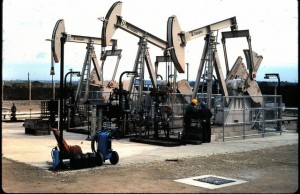
We here at Tiger General have great pride in selling our Swabbing Equipment. However, some people may not be familiar with what the actual process of swabbing is. We wanted to write a quick blog post to explain the process to our readers. In short, swabbing is a form of “well control” that releases bottom hole pressure in order to “kick” the well off. When wells are first drilled, they are usually fractured by a pressurized liquid to help open up “production zones” where oil or gas can travel to. The next step is where the actual swabbing takes place.
Swabbing rigs are then used to remove the fluids from the production zones. These swabbing rigs normally have a winch with a cable and a foldable mast with a pulley on top. First, the rig operator must back the machine as close to the well as he possibly can. Next, the operator raises the mast and moves it until it is aligned with the center of the well. Next, the operator lowers the cable in and out of the well via the “winch drum”. Here, the operator must be able to maintain control of the machine while taking into account the well’s sound and depth.
The activities of the swabbing rig then allow for the removal of the liquids inside the well. Standard practices involve removing 6 barrels of fluid out of the well. This practice if referred to as a “Run”. Some wells may take just one run while other may require multiple. Removing these fluids then causes the bottom hole pressure to increase. This allows the oil or gas to be pushed out of the well to cause it to start “flowing”. Oilfield workers may then start collecting and storing the natural resource that it being emitted from the well they are working on. As the well ages, the bottom pressure of the well may not be enough to push the oil and gas out of the well anymore. The well has then stopped flowing and the swabbing process needs to be started over again.
If you’d like more information about Tiger General swab rigs please Download our Swab Master Rigs Brochure or Contact Us now to learn more at 330-725-4949.